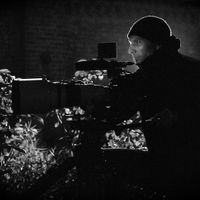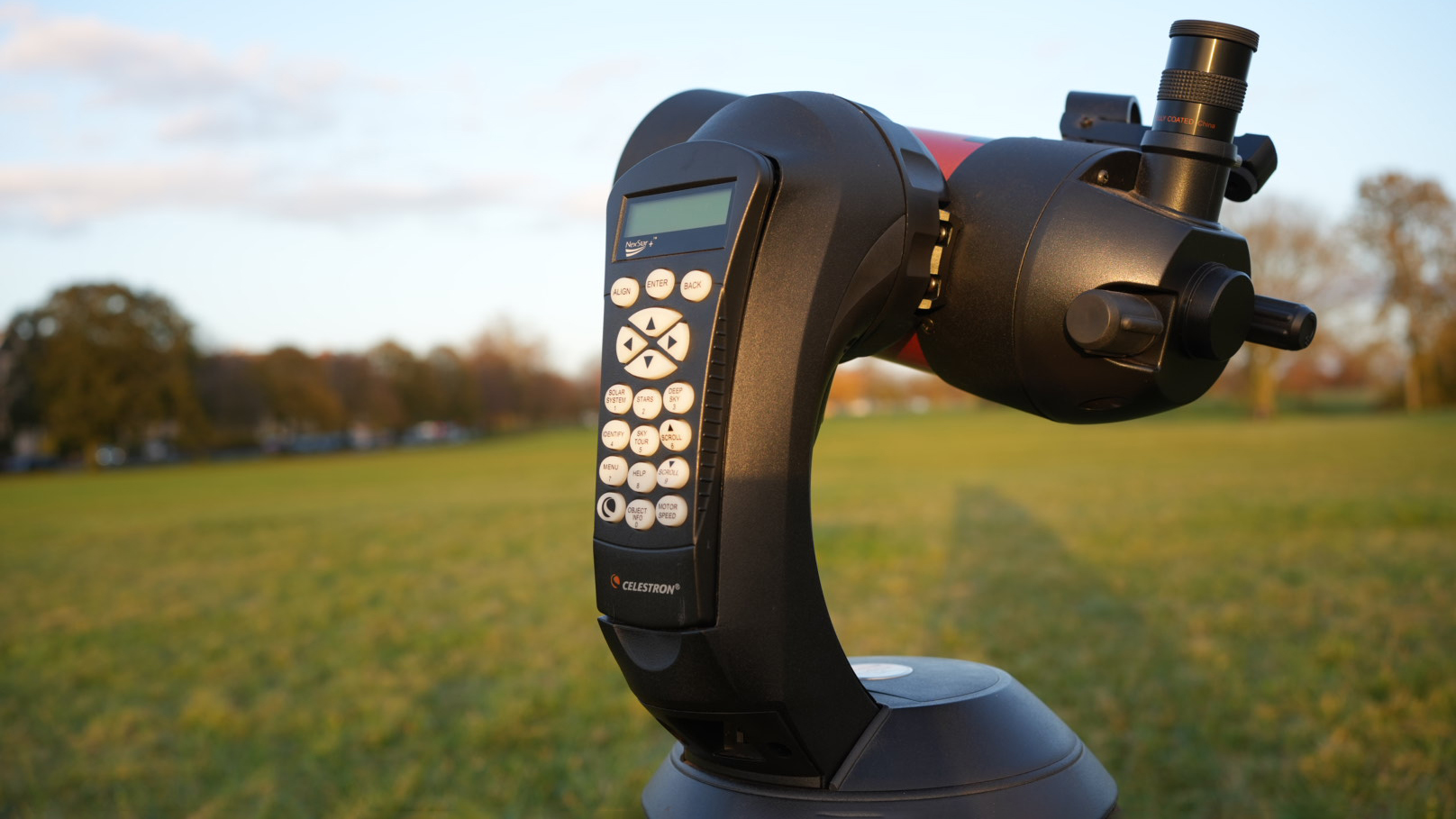Celestron Nexstar 4SE review: take a guided tour of the Solar System
A solid telescope for stunning views of the planets


The Celestron Nexstar 4SE makes it easy to enjoy the highlights of our planetary system. The 25ml eyepiece provided is very good, if under-powered, for optimal viewing of planets. Once set up, it tracks objects well, though expect to buy a lot of AA batteries (or a PowerTank) to keep it running.
-
+
GoTo mount automatically locates & tracks objects
-
+
Extremely sharp optics
-
+
Great build quality
-
+
Easy to use
-
-
Narrow view limits use for deep sky objects
-
-
Only supplied with one low-power eyepiece
-
-
Burns through batteries quickly
Why you can trust T3

Anyone interested in amateur astronomy faces a bewildering choice of telescopes. Many of the best telescopes are good at viewing either the deep sky or objects in our Solar System, but not both. This Celestron Nexstar 4SE review will help you decide if this is the right telescope for you.
Celestron Nexstar 4SE review
Celestron Nexstar 4SE review: price and availability
The Celestron Nexstar 4 SE costs around $579.99 / £649.99 / AU$1299.99. It is the smallest model in the Nexstar SE series. The 5SE, 6SE and 8SE all have larger apertures – and price tags. For the best prices, check out the price widgets at the top and bottom of this review.
Celestron Nexstar 4SE review: key features

The iconic orange body of this telescope instantly identifies it as part of the Celestron Nexstar family. It is a Maksutov-Cassegrain design with a 4” (102mm) aperture and a 52” (1325mm) focal length. Simply put, you’ll be able to comfortably see the whole of the Moon with the included 25mm Plossl eyepiece. On clear nights Saturn will reveal it’s rings and Jupiter it’s Galilean moons.
The GoTo mount that the telescope is attached to is one of the key selling points of the Nexstar 4SE. The software contained inside includes a database of 40,000 celestial objects, which the mount can automatically find for you no matter where you are. Prefer to find the stars and planets yourself? The attached hand controller lets you slew effortlessly across the sky and is also useful for fine-tuning the automated GoTo system.
Celestron Nexstar 4SE review: setup and use

The Celestron Nexstar 4SE is quite a neat package. The telescope itself is compact, and despite the high build quality, it isn’t particularly heavy. The tripod is fairly heavy-duty, but it is quick and easy to set up and includes a tray for holding additional eyepieces. The lack of a built-in spirit level on the tripod is a bit of a head-scratcher because to use the GoTo mount, the tripod must be perfectly level. A separate tiny spirit level is included for this purpose, which is very easy to drop and, inevitably, lose. Why not build the bubble into the tripod itself? Only Celestron know the answer.
Once the tripod is level and locked off, it makes a very stable base. The telescope and mount come as a single unit which attaches to the tripod fairly easily with three screws and a locator pin, but take care not to move the tripod while doing this, or it will need to be re-levelled. The StarPointer red-dot finder then attaches to the side of the telescope tube. This is used for aligning the GoTo system and for manually lining up objects in the eyepiece - but does first require calibrating itself. This is easiest to do either in the daytime or with a very bright visible object at night, and once set, it doesn’t usually need doing again.

With the necessary eight AA batteries installed in the mount, it really is simple to use the SkyAlign technology to get started. Input your location, time and date using the hand controller. Next, use the StarPointer red-dot finder to locate a bright object in the sky, centre it in the eyepiece and confirm with the controller. Repeat with two other celestial objects (it doesn’t matter which ones or require that you know what they are), and you’re done.
Get all the latest news, reviews, deals and buying guides on gorgeous tech, home and active products from the T3 experts
Let the software take you on a pre-programmed tour of the night sky, or select one of the 40,000 objects from the database, and the GoTo mount will take you straight there. The telescope will also track objects automatically as they move across the night sky. In practice, this system does work fairly reliably although it sometimes needs a little tweak with the controller to centre objects.
Unfortunately, this is where the limitations of the Celestron Nexstar 4SE become apparent. This type of telescope is not really designed for deep-sky objects. Of those 40,000 objects in the database, most will either not fit in the narrow field of view or will be too dark or poorly defined to be of much interest to the amateur astronomer.
In addition, the GoTo mount eats through batteries quickly, and when they run out and need to be replaced, the alignment process will have to be repeated. An AC adaptor is available to run the telescope instead but is not included in the package. For those intending to take the Nexstar 4SE away from home on a regular basis, a PowerTank or other large DC power source is highly recommended.
Celestron Nexstar 4SE review: verdict

The Celestron Nexstar 4SE is a bit of a peculiarity. It really does work well as a planetary telescope, and with an additional eyepiece of greater magnification, it will wow with details of the lunar surface and more features of Jupiter and Saturn clearly visible. Yet it also has components, such as the GoTo mount and an equatorial wedge, which are really more helpful for viewing and photographing objects beyond our Solar System but which the Nexstar 4SE is not very good at.
It is very well made, if a little dated, and could be a good choice for beginning your journey in astronomy if you are prepared to spend more on some almost essential accessories. Revel in views of the Moon and the planets, but don’t expect to be shown the Universe.
Celestron Nexstar 4SE review: also consider
If you are happy with the idea of manually aligning your telescope (with the guidance of a very clever smartphone app of course) rather than the motorised GoTo mount of the Celestron Nexstar 4SE, consider the Celestron Starsense Explorer DX 130AZ. It will require a little more input and thought to use but may be more rewarding as a result.
If the thought of missing out on those deep sky objects is too much and you want to impress on social media with stunning images of galaxies and nebulae, check out the Unistellar eVscope 2 digital telescope – though be prepared to spend a lot more money.

Iain is a freelance writer and cameraman working mainly on natural history, adventure and observational documentaries, as well as live events and corporate movies. He's based in Bristol and has filmed throughout Europe, North America, China, Papua New Guinea, Ecuador and the Galapagos Islands.